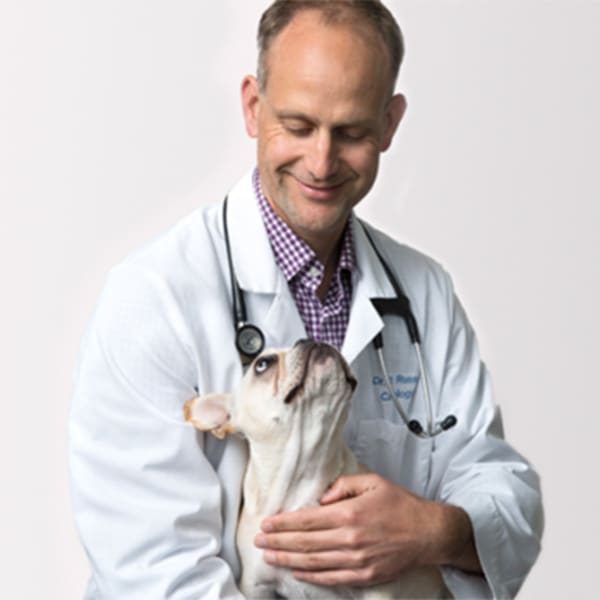The Role of Ultrasound and CT Scan in Modern Veterinary Practices: Insights From Experienced Professionals
In modern vet practices, ultrasound and CT scans significantly improve diagnostic abilities. These imaging strategies provide crucial insights into animal health, leading treatment choices. Experienced experts recognize the distinct benefits of each technique. Ultrasound provides real-time analyses, while CT checks supply elaborate physiological details. Comprehending their applications and functions elevates crucial concerns concerning their impact on patient end results and the future of vet diagnostics. What understandings can be gained from their incorporated usage?
Recognizing Ultrasound in Veterinary Medicine
Ultrasound is an essential analysis tool in vet medicine, using a non-invasive technique to picture inner frameworks. This imaging technique utilizes high-frequency acoustic waves to develop real-time photos of cells and body organs, enabling veterinarians to assess conditions without surgical treatment. Typical applications include assessing the heart, liver, kidneys, and reproductive body organs, in addition to keeping track of pregnancies.The procedure is relatively fast and can be done in numerous settings, making it an obtainable alternative for vets. Unlike radiography, ultrasound offers detailed details regarding soft tissues and blood circulation, which is important for exact diagnoses.Veterinary professionals depend on ultrasound to discover problems such as growths, cysts, and liquid build-up. Its ability to lead biopsies and various other treatments additionally boosts its utility in professional method. By providing a efficient and secure way to examine internal composition, ultrasound has come to be a foundation of modern veterinary diagnostics.
The Benefits of CT Scans for Animal Diagnostics
CT scans offer substantial advantages in vet diagnostics by providing boosted precision in identifying interior problems (CT Scans For Dogs). As a non-invasive imaging technique, they ensure the safety and comfort of animals throughout assessments. On top of that, CT checks help with a detailed assessment of inner frameworks, enabling a lot more reliable treatment preparation
Boosted Diagnostic Accuracy
Developments in imaging innovation have considerably boosted analysis accuracy in veterinary medication, particularly via making use of CT scans. These scans provide thorough cross-sectional pictures of an animal's interior structures, enabling veterinarians to recognize problems with accuracy. The high resolution and three-dimensional capacities of CT imaging assist in the discovery of conditions such as lumps, fractures, and internal blood loss that might be missed with standard imaging methods. Furthermore, CT scans can assist in pre-surgical planning by offering a comprehensive view of physiological relationships. This degree of detail not just improves the precision of medical diagnoses but additionally help in customizing efficient treatment strategies. The integration of CT technology into veterinary practices is changing the landscape of animal healthcare, boosting results for people.
Non-Invasive Imaging Strategy
The intro of non-invasive imaging methods has actually transformed animal diagnostics, with CT checks becoming a prominent tool in veterinary techniques. These scans provide high-resolution, cross-sectional pictures of an animal's inner frameworks, enabling veterinarians to assess complicated problems without the requirement for invasive treatments. The advantages of CT scans include their capability to find growths, fractures, and internal blood loss with exceptional accuracy. In addition, they assist in the assessment of soft cells and body organs, improving analysis abilities. The rate of CT scanning allows fast decision-making, which is important in emergency situation situations. By minimizing anxiety and discomfort for the pet, CT scans add to an extra humane strategy to diagnostics, inevitably improving therapy outcomes and advancing vet care.
Comprehensive Internal Analysis
A thorough inner evaluation is vital for precise diagnosis and efficient treatment in veterinary medication. CT scans offer substantial advantages hereof, giving in-depth cross-sectional pictures of a pet's interior structures. This sophisticated imaging modality boosts visualization of complicated anatomical regions, making it possible for veterinarians to determine problems such as tumors, cracks, and interior bleeding with higher accuracy. On top of that, CT checks assist in the evaluation of conditions that may be challenging to detect through traditional methods. The speed and accuracy of CT imaging also contribute to prompt treatments, boosting person results. As veterinary methods significantly incorporate CT innovation, the benefits of extensive interior assessments become noticeable, strengthening the value of this device in contemporary veterinary diagnostics.
Contrasting Ultrasound and CT Imaging Techniques
While both ultrasound and CT imaging serve important duties in veterinary diagnostics, each method uses distinct advantages and limitations that can influence medical decision-making. Ultrasound is specifically valued for its real-time imaging abilities, permitting vets to observe vibrant physical processes. This technique is non-invasive, mobile, and does not involve ionizing radiation, making it a more secure choice for both medical professionals and animals. However, ultrasound may have limitations in picturing certain anatomical frameworks or deep tissues.Conversely, CT imaging offers thorough cross-sectional views of the body, permitting exact localization of problems. It excels in examining complicated organs and structures, especially in the thorax and abdomen. CT scans call for sedation or anesthetic in numerous instances and include direct exposure to ionizing radiation. Eventually, the selection between ultrasound and CT depends upon the particular professional situation, the location of interest, and the seriousness of the analysis requirements.
Instance Researches: Successful Medical Diagnoses Through Imaging
Situation studies show the significant renovations in diagnostic precision accomplished via innovative imaging modern technologies like ultrasound and CT scans in veterinary methods. These advancements not only boost the discovery of different conditions however also help with prompt and efficient therapy plans. Assessing details instances can highlight the transformative impact of these imaging techniques on veterinary medicine.
Analysis Accuracy Improvements

Imaging Modern Technology Advancements
As vet imaging technology continues to progress, its influence on diagnostic capacities becomes significantly evident. Current study highlight the effective application of advanced ultrasound and CT scan strategies in identifying intricate problems. A vet clinic utilized high-resolution CT scans to detect a rare form of lung cancer in a dog, which standard imaging had missed out on. An ultrasound examination exposed an abdominal mass in a cat, triggering timely medical treatment and a favorable end result. These developments not just enhance diagnostic accuracy yet likewise enable veterinarians to design targeted therapy plans. By leveraging advanced imaging innovations, vet specialists are substantially boosting individual care, leading to much more effective administration of numerous health conditions in pets.
The Function of Imaging in Emergency Situation Vet Care
Imaging plays an important duty in emergency situation veterinary Going Here care, supplying veterinarians with essential info needed to make rapid, informed decisions. In urgent situations, strategies like ultrasound and CT scans allow specialists to swiftly analyze a family pet's interior structures, identifying vital conditions such as inner blood loss, cracks, or body organ problems. These imaging modalities permit real-time analyses, facilitating prompt interventions that can be life-saving. For example, ultrasound is vital for reviewing soft cells injuries and conditions like liquid accumulation, while CT scans deal comprehensive photos of intricate anatomical frameworks, necessary for identifying injury instances. The speed and accuracy of these imaging strategies boost the vet's capacity to develop reliable treatment plans, making sure the most effective feasible results for their individuals. As a result, the combination of sophisticated imaging modern technologies right into emergency situation veterinary methods is not only beneficial but significantly required, as it improves diagnostic capacities and boosts overall pet care throughout defining moments.
Training and Proficiency in Veterinary Imaging
Advanced imaging methods such as ultrasound and CT scans are necessary for effective veterinary care, the successful execution of these modern technologies heavily depends on the training and knowledge of vet specialists. Competent use imaging devices requires thorough knowledge of anatomy, pathology, and the principles underlying each technique. Vet professionals must undergo customized training to accurately translate imaging outcomes, which is vital for identifying problems and planning treatment.Certifications and continuing education and learning in veterinary imaging improve the abilities of practitioners, allowing them to remain updated with technological advancements. Cooperation between radiologists and vets commonly leads to improved diagnostic accuracy, as professionals can supply understandings into complicated instances. Additionally, practical experience in managing imaging equipment fosters confidence in its application. Ultimately, the high quality of vet imaging services is directly correlated to the level of training and knowledge possessed by the professionals utilizing these crucial analysis devices.
Future Patterns in Diagnostic Imaging for Animals
With the fast developments in innovation, veterinary diagnostic imaging is positioned for significant development in the coming years. Emerging fads suggest a shift towards more easily accessible and portable imaging modalities, such as portable ultrasound devices, which can enhance field diagnostics. In addition, the integration of man-made intelligence is anticipated to transform photo evaluation, enabling quicker and official site more exact interpretations of results.Moreover, developments in 3D imaging techniques and calculated tomography will give vets with more detailed views of pet anatomy, leading to enhanced treatment strategies. Online fact innovation might likewise contribute in medical planning and education and learning, offering vets an unique viewpoint on complex cases.As telemedicine continues to expand, remote examinations assisted in by analysis imaging will come to be extra usual, permitting specialists to assist general specialists in real-time. On the whole, these trends are readied to improve the performance and efficiency of vet treatment, inevitably boosting animal end results.
Often Asked Inquiries
Just How Much Do Ultrasound and CT Checks Price in Veterinary Facilities?
The prices of ultrasound and CT scans in veterinary centers usually vary from $300 to $1,500, depending on elements such as place, facility kind, and specific procedures needed for the animal's medical diagnosis and therapy.

Are There Any Kind Of Dangers Associated With Ultrasound and CT Scans for Pets?
Ultrasound and CT scans generally position marginal threats to family pets. Nevertheless, potential worries include sedation reactions and direct exposure to anesthetics. Ultrasound For Dogs. Veterinarians carefully assess each instance to reduce any kind of dangers connected with these analysis procedures
How Lengthy Do Ultrasound and CT Treatments Normally Take?
Ultrasound procedures generally take around thirty minutes to an hour, depending upon the complexity. CT scans, being even more comprehensive, typically need thirty minutes to 90 minutes, consisting of preparation and healing time for the pet dog.
Can All Veterinarians Perform Ultrasounds and CT Scans?
Not all vets can carry out ultrasounds and CT scans. Specialized training and qualification are typically called for to guarantee expertise in these advanced imaging methods, which might limit their this article accessibility to vets with additional qualifications and sources.
What Sorts Of Animals Profit Most From These Imaging Techniques?
Specific pet varieties, especially felines and pet dogs, advantage considerably from ultrasound and CT scans. These imaging strategies enhance diagnostic precision for conditions like growths, interior injuries, and body organ problems, bring about better therapy end results and patient treatment. The high resolution and three-dimensional capabilities of CT imaging help with the detection of conditions such as lumps, cracks, and inner blood loss that might be missed with conventional imaging techniques. Instance studies illustrate the significant improvements in analysis precision attained with innovative imaging technologies like ultrasound and CT scans in veterinary techniques. Improving analysis precision in veterinary methods has actually been considerably assisted by developments in imaging innovations such as ultrasound and CT scans. Sophisticated imaging methods such as ultrasound and CT scans are crucial for effective vet treatment, the successful implementation of these modern technologies greatly depends on the training and proficiency of vet specialists. Veterinary specialists have to undertake specific training to properly interpret imaging outcomes, which is crucial for diagnosing problems and intending treatment.Certifications and continuing education in vet imaging enhance the skills of professionals, enabling them to remain upgraded with technical developments.